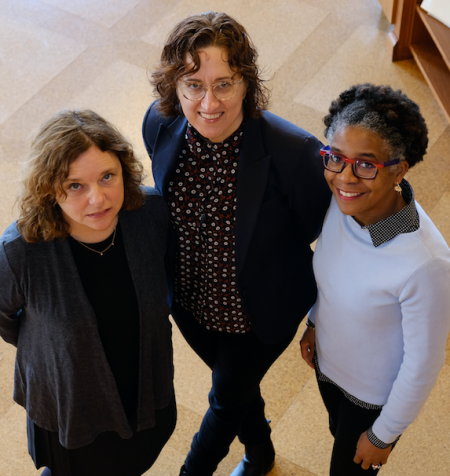
Many years before Uber and Lyft, there were jitney cabs: ride-share services created by and for black Americans discriminated against by taxi companies. It was a business idea that originated in the black community, as well as an innovation in the marketplace. It’s also just one example of a successful black industry excluded from the narrative of the business world. Even at Harvard Business School, the successes of black entrepreneurs were largely invisible in business case studies. Fewer than eighty out of ten thousand business cases taught to students featured black business leaders—until Professor Steven Rogers took action. He was eager to partner with Baker Library to help students realize the value of data to support their business ideas.
Professor Rogers created the “Black Business Leaders and Entrepreneurship” course to highlight the accomplishments of black protagonists and to identify, celebrate, and recognize black brilliance. In addition to studying business cases, students in the course are also challenged to find markets in the black community that are not being served. They are asked to come up with an idea and a solid business plan for a product or service that addresses a proven need.

“Our future business leaders are being taught that black people don’t matter. The best way to teach that is exclusion,” said Professor Rogers. “I want HBS to be important to the black community: local, national, and international, not just in the form of our students and alumni, but through ideas that have positive impacts.” Black representation in the business world is important to Rogers as he educates future generations of leaders. “Black businessmen and women should not be an anomaly. They should be included as part of the natural fabric of successful businesspeople,” he said. Many black alumni of HBS have reached out to him offering to be the subjects of new case studies.
In order to build the strongest possible business cases, students need access to the data that will back up their proposals and illuminate potential markets. Professor Rogers knew immediately where to go to support his course —Baker Library.
“We don’t want students working off intuition,” he said. “We want them working off of facts, doing research, and using data that verifies that it’s an underserved market. It gives credibility that this is a problem that needs to be solved, and this is how we solve it. The best place to go is the library.”
Librarians Mallory Stark, Cynthia Churchwell, and Leslie Burmeister were eager to support the new course. They presented inside the classroom on library resources, created a course guide of databases and research tools, and invited students to work with them inside Baker Library. In the fall, a small team of librarians hosted 50 students to assist them in developing and validating their business ideas.

“There was so much energy in the room," said Churchwell. “It’s a great confluence of everything that you want: a professor that knows the value of information, who demands that students gain that knowledge, and wants to partner with the library.”
Librarians work on helping students before they even set foot in the classroom. Professor Rogers asks students to submit their topics before the research session so that librarians can begin the hunt for data on informal economies and markets that can’t easily be found in a database.
“I’m completely spoiled by Baker Library. If I have an idea, I go to Mallory and Cynthia and they come back with what they have in mind to support it,” said Rogers. “Librarians have added meaningful, substantive value that’s measurable in the work I’ve done. They’ve allowed me to create practicums that are three dimensional. Their contributions are completely invaluable to the course offering.”
Harvard librarians are also taking their engagement with the course to a new level. Since many of the business ideas involved geographic data, when the course was offered for the second time during the spring of 2018, Stark decided to reach out to a data specialist. She contacted the Institute for Quantitative Social Science, and Jeff Blossom agreed to partner with the Baker team to present in the classroom and assist students in a research drop-in session.
This fall, Stark recruited Scott Walker from the Harvard Map Collection to help students access, identify, and visualize demographic data using maps of black communities from across the United States. One proposal for a doula service serving African-American women used a map of greater Boston to prove the business need: mapping where African-American families with young children live, and superimposing access to healthcare and childcare on top of that information. Data visualization is one more powerful tool for an entrepreneur pitching a business.
At the close of the fall semester, students presented their proposals in front of a packed classroom, answering questions on the spot from their classmates and representatives from the business community. One team created a business plan for an app called Brighter Day, a mental health subscription service targeted to African-Americans, who, according to their research, are less likely to seek help for psychological problems than whites. The proposed app connects them to culturally competent mental health professionals in their communities. Another proposal, called Trims and Rims, is a mobile barbershop targeted to young black professionals and staffed by recently incarcerated men and women. A third project is a service that provides affordable eye care to black communities, to name only a few of the many strong ideas presented each semester.
After the presentations came to an end, Rogers remarked that in the three years since he started teaching the course, these proposals were the strongest because they used data at every point to defend the need of each service—data that was surfaced with the help of librarians. “My students absolutely love them,” said Professor Rogers. “They are resources for information that my students would have never considered.”